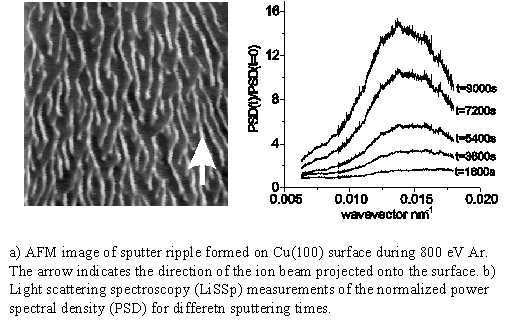
Spontaneous surface patterning during low energy ion bombardment
When low energy ions are used to sputter material from surfaces, a regular wavy pattern often forms spontaneously. These ripples can have wavelengths from nanometers to microns and cover large areas of the surface. The formation process is self-organizing, i.e., the pattern arises from the interaction between different processes on the surface and not due to modulation or rastering of the ion beam. We use in situ light scattering (LiSSp) to monitor the ripple amplitude and wavelength in real time during sputtering. The experiments are interpreted in terms of an instability model proposed by Bradley and Harper that enables us to relate the measured ripple evolution to the fundamental defect kinetics controlling it. By measuring the dependence of the wavelength and growth rate on the temperature and flux, we have created a map of the different kinetic regimes of ripple formation (equivalent to a “kinetic phase diagram”). More recently we have developed a kinetic Monte Carlo simulation that allows us to model ripple formation from an atomistic perspective. These studies are resulting in a comprehensive picture of ion-induced surface morphology evolution over a wide range of sputtering conditions.
